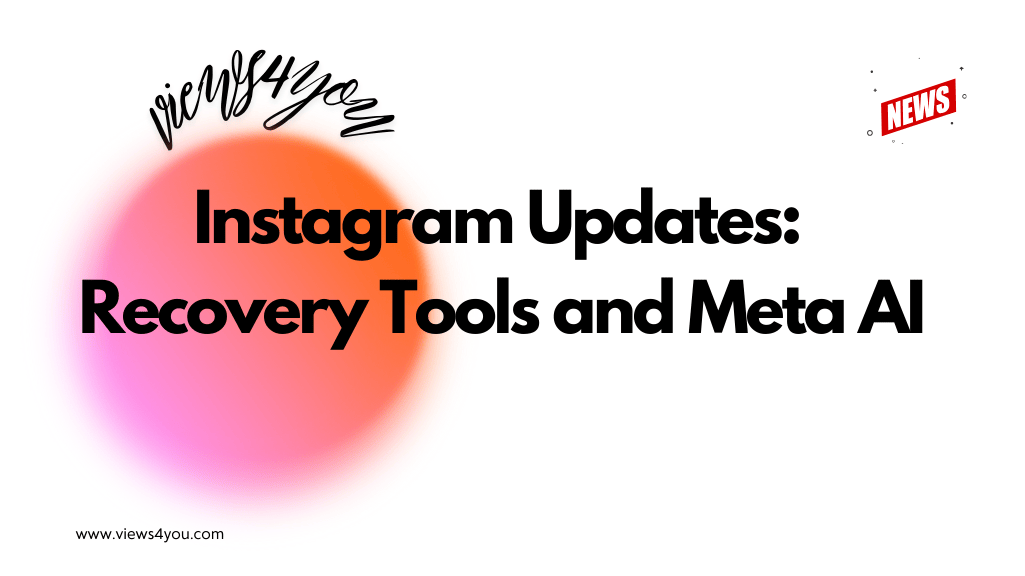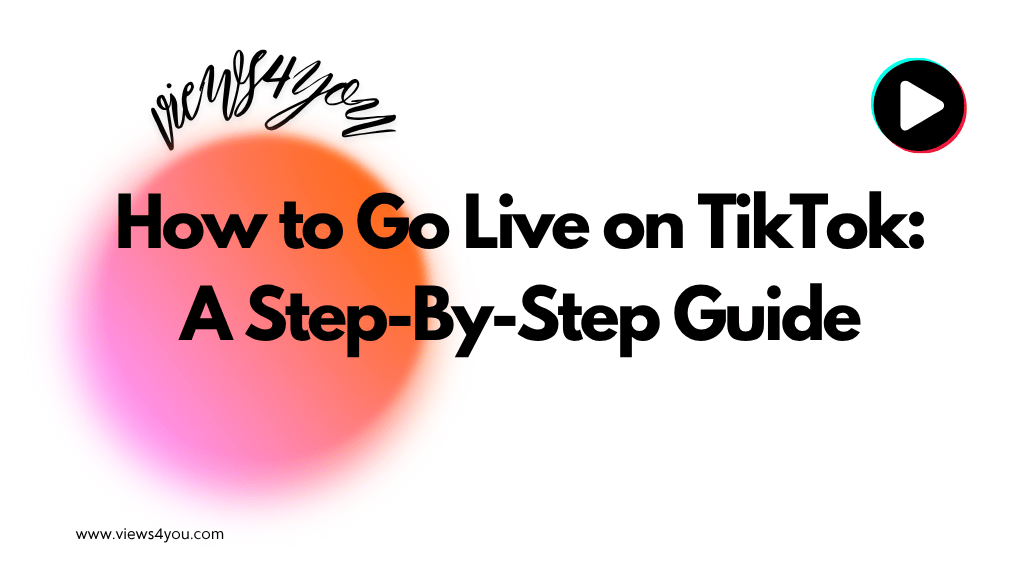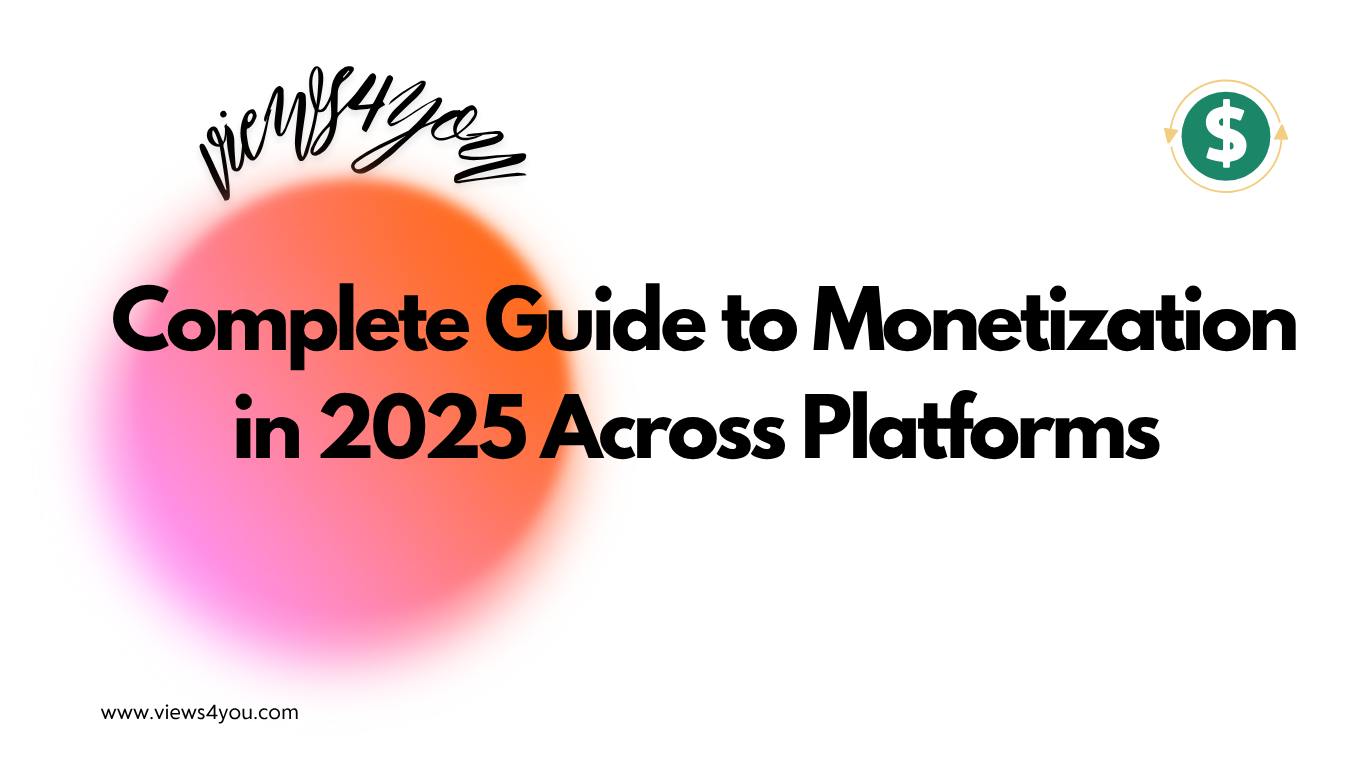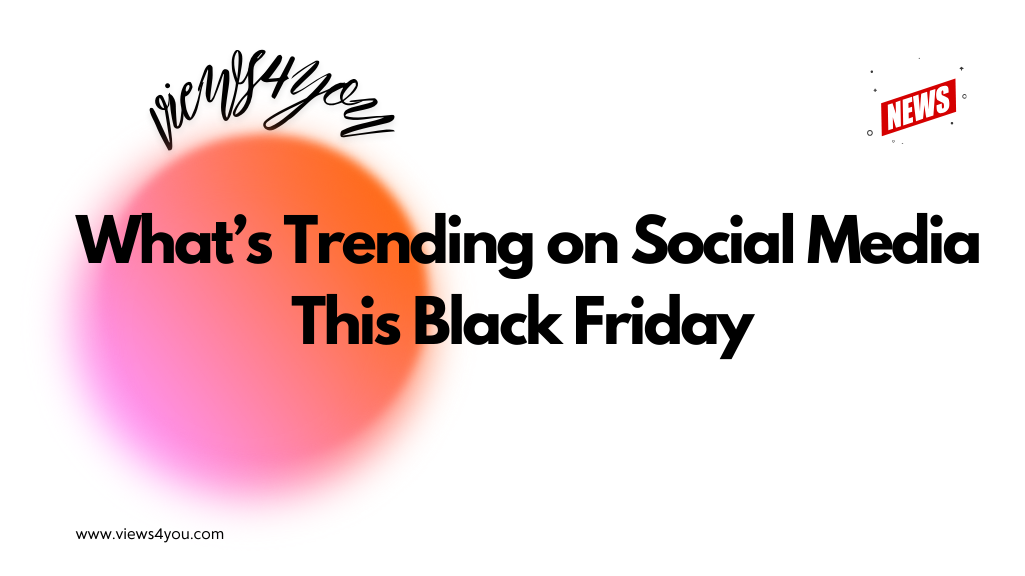Spotify focuses on music discovery, podcasts, and high audio quality, while YouTube Music offers rare live performances, covers, and video integration. If you want playlists and discovery, choose Spotify; if you want variety and YouTube Premium benefits, pick YouTube Music.
Music streaming has become the main way people listen to songs worldwide. Two platforms dominate conversation: Spotify and YouTube Music. Both services promise millions of tracks, personalized recommendations, and the ability to carry your library anywhere. But the question remains: which one is right for you?
This blog breaks down their strengths and weaknesses in detail, helping you decide where to put your subscription money in 2025.
The Story Behind Spotify and YouTube Music
Spotify launched in 2008 and changed how people consume music. Instead of downloading MP3s, listeners could stream any song instantly. Over time, it added podcasts, exclusive deals with artists, and strong algorithms that keep users engaged. Today, Spotify has over 600 million users globally and continues to lead in music discovery.
YouTube Music came later, building on YouTube’s massive video library. Officially launched in 2015 and revamped in 2018, it offers an experience that combines traditional music streaming with the unique advantage of concert footage, covers, remixes, and fan content. For users who grew up with YouTube as their default music player, the transition feels natural.
Library Size and Content
Spotify boasts over 100 million licensed tracks across every genre imaginable. It also includes podcasts, audiobooks in certain markets, and editorial playlists curated by music experts.
YouTube Music’s catalog is harder to measure; while its licensed music collection is huge, the real value comes from extra content not found elsewhere: live performances, demo versions, mashups, or even unofficial fan uploads. If you want to hear rare versions of your favorite tracks, YouTube Music usually has them.
Spotify offers a more standardized, professional catalog, while YouTube Music feels more like an all-access backstage pass.
Music Discovery and Recommendations
Spotify is famous for its algorithm-driven playlists. Discover Weekly has been a game-changer, predicting what users want with surprising accuracy. Release Radar ensures you never miss new songs from your favorite artists, while Daily Mixes combine comfort with exploration.
YouTube Music uses a different approach. Its recommendations are heavily influenced by your YouTube watch history. If you watch a lot of music videos, live shows, or niche genres, the app integrates those tastes seamlessly. However, some users feel the algorithm is less sharp compared to Spotify’s precise curation.
Spotify still leads in personalization, but YouTube Music excels for people whose habits stretch across music and video.
User Experience and Interface
Spotify’s design is sleek and consistent. It’s built for audio-first listening. Playlists are easy to create, collaborative features allow friends to add songs, and the cross-platform experience is nearly flawless. Whether you’re on iOS, Android, desktop, or smart TV, Spotify feels the same.
YouTube Music puts video at the center. You can switch between audio-only and video modes instantly, a feature Spotify doesn’t have. That makes it perfect for users who like visuals alongside songs. However, some find the navigation cluttered compared to Spotify’s minimalist design.
Spotify for simplicity and focus; YouTube Music for visual richness.
Pricing and Plans
Both platforms offer free, ad-supported versions. But the real competition is in premium plans.
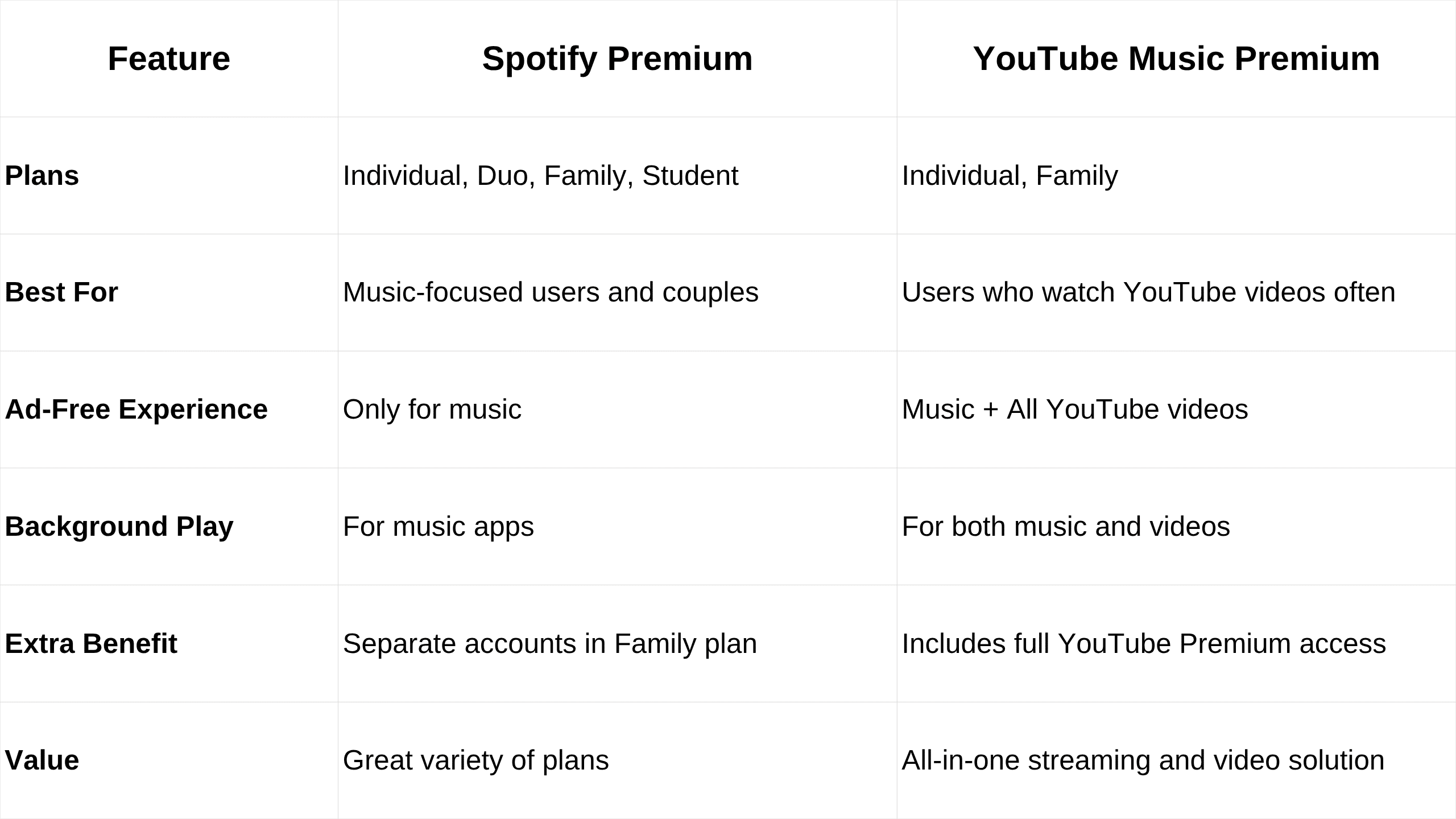
- Spotify Premium: Offers Individual, Duo, Family, and Student plans. Prices are competitive and consistent across regions. Family members can enjoy separate accounts under one subscription, and Duo is unique for couples.
- YouTube Music Premium: Offers individual and family plans. Its biggest advantage is bundling with YouTube Premium, which removes ads across the entire YouTube platform and enables background play for videos.
For someone who watches a lot of YouTube, the bundle is hard to beat. But if your focus is purely on music, Spotify gives more subscription flexibility.
Sound Quality
Audiophiles often debate this.
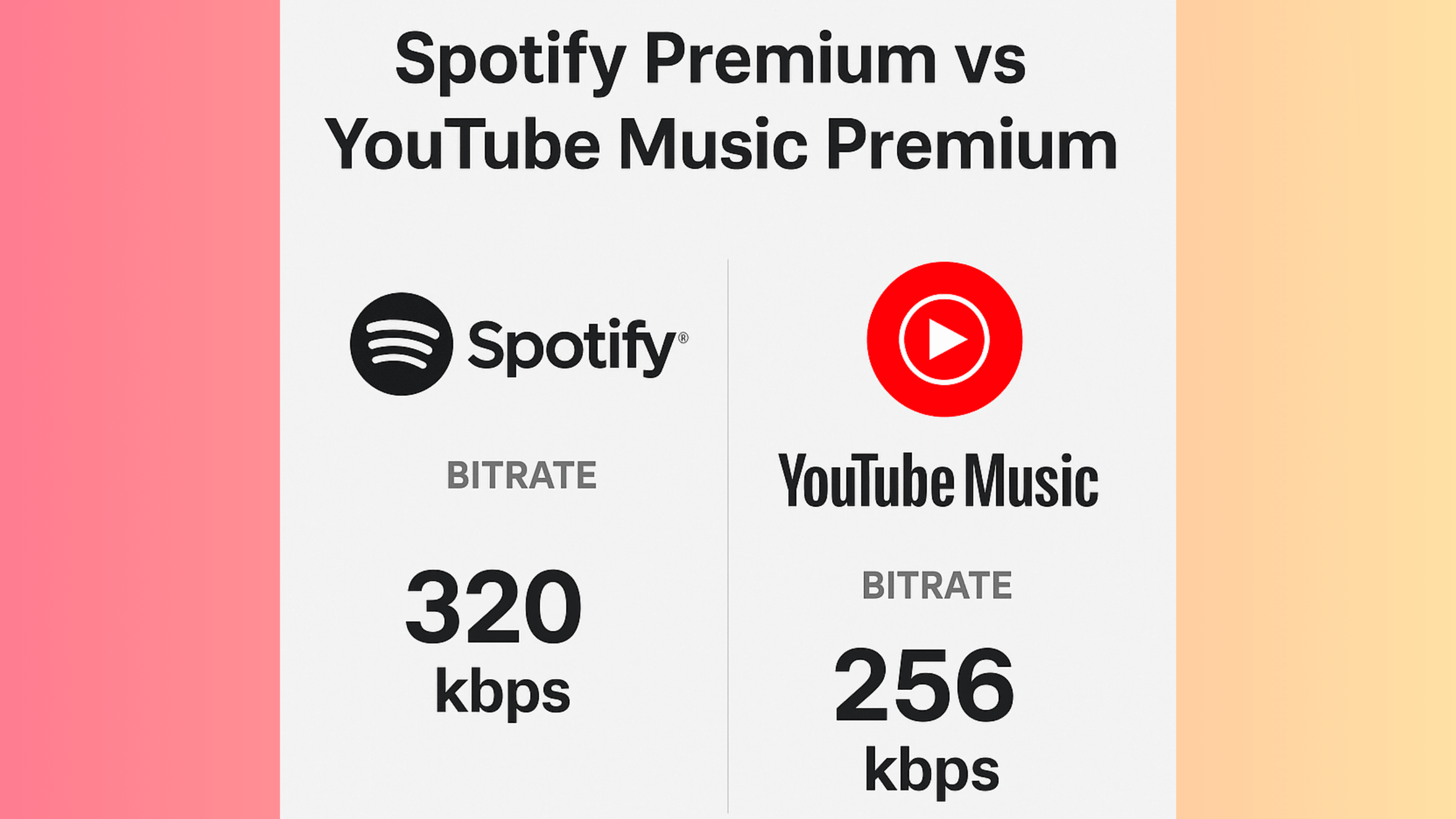
- Spotify Premium: Streams at up to 320 kbps. A long-promised “HiFi” tier with lossless audio is still pending, though many expect it to launch soon.
- YouTube Music Premium: Streams at up to 256 kbps AAC. While not bad, it doesn’t reach Spotify’s maximum bitrate.
For most casual listeners, the difference is barely noticeable. But those with high-quality headphones or speakers may prefer Spotify.
Offline Listening and Downloads
Both apps allow downloads for offline playback.
- Spotify’s system is reliable and syncs well across devices.
- YouTube Music allows downloads but occasionally requires online verification, which can be inconvenient if you’re traveling with poor internet access.
Exclusive Features
Spotify’s edge lies in podcasts and collaborations. Major shows like The Joe Rogan Experience and original podcasts make it more than a music app. It’s a full audio hub.
YouTube Music’s exclusive feature is its integration with YouTube itself. The ability to watch videos, switch formats, and explore fan-made content makes it unique. For people who already spend hours on YouTube, it feels natural.
When Spotify Is Better
If you want the best discovery playlists and personalized recommendations.
- If you’re a heavy podcast listener.
- If you want reliable cross-device access, from smartwatches to game consoles.
- If high-quality audio is a priority.
When YouTube Music Is Better
If you’re already paying for YouTube Premium.
- If you love live shows, covers, and rare versions of tracks.
- If you like switching between video and audio modes.
- If your listening habits overlap heavily with your YouTube usage.
Streaming Trends and the Bigger Picture
The competition between Spotify and YouTube Music reflects larger trends in entertainment. Listeners are no longer satisfied with just a library of songs—they expect personalization, seamless integration, and multi-format experiences.
Spotify continues to bet on AI-driven discovery and podcasting, while YouTube Music leans into the strength of YouTube’s ecosystem. Both are shaping how people consume music and will likely continue to coexist rather than replace one another.
Final Verdict
There’s no universal winner. Spotify is the king of music discovery, podcasts, and high-quality audio, while YouTube Music shines as the ultimate video-music hybrid.
Your choice should depend on what you value more:
- A polished, audio-focused ecosystem with unbeatable playlists.
- Or a versatile platform that combines music with video and community-driven content.
FAQs
Which platform has more songs?
Spotify has a larger licensed library, but YouTube Music includes unique user-uploaded content.
Does YouTube Music come with YouTube Premium?
Yes. Subscribing to YouTube Premium includes YouTube Music Premium.
Which works better for families?
Spotify’s Family and Duo plans offer more flexibility. YouTube Music has a family plan but no Duo option.
Can I transfer playlists between the two?
Yes, third-party tools exist to move playlists, but results can vary.


